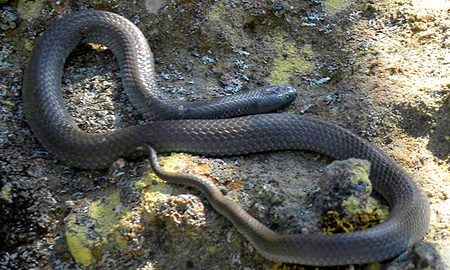Introduction
Snake bites are a major clinical emergency that can happen in different settings, specifically in regions where snakes are prevalent. In Australia alone, there are countless types of poisonous serpents such as the Tiger Snake, Eastern Brown Snake, and King Brown Snake. Recognizing exactly how to efficiently take care of snake attacks is vital for any individual that hangs out outdoors or lives in backwoods. This post will certainly explore comprehensive emergency treatment monitoring techniques for serpent bites and lay out best practices for responding to these incidents.
First Help Administration of Snake Bites: Best Practices for every single Situation
When handling a serpent bite, the preliminary feedback can dramatically affect the target's result. Immediate activity is essential because swift clinical treatment typically determines the degree of injury or survival rate. Here are important first aid concepts to keep in mind: Australia's most venomous snakes
Stay Calm: The very first step in managing a serpent bite is to remain calm. Panic can elevate heart rates and boost the spread of poison throughout the body. Call for Help: Dial emergency situation solutions quickly. Give them with your location and any information regarding the serpent if possible. Keep the Target Still: Motivate the sufferer to stay as still as feasible. Motion can raise blood circulation, speeding up venom absorption right into the bloodstream. Positioning: If practical, position the damaged arm or leg at or listed below heart degree. This positioning helps slow down poison spread. Remove Tight Clothing: Loosen any clothing or precious jewelry around the bite site; swelling may occur quickly after a serpent bite. Do Not Use Ice/Cold Packs: In contrast to common belief, applying ice can aggravate tissue damages and must be avoided.
Understanding Snake Variety and Their Habitats
Tiger Snakes and Their Habitat
Tiger snakes (Notechis scutatus) are amongst Australia's most infamous poisonous snakes due to their hostile nature and powerful venom.
- Habitat: They typically populate seaside regions, marshes, and areas with dense vegetation like marshes and swamps. Risks: Recognition of neighborhood tiger serpent habitats can lower the threat of encountering one unexpectedly.
Eastern Brown Snakes: A Significant Threat
The Eastern Brown Serpent (Pseudonaja textilis) is one more extremely venomous species discovered throughout eastern Australia.
- Habitat: This serpent flourishes in metropolitan locations, agricultural lands, and grasslands. Behavior: Understood for its fast strikes when intimidated, recognizing its habits might help reduce encounters.
Recognizing Signs of Snake Bites
Identifying signs at an early stage can enhance chances of efficient therapy:
Local Symptoms:- Pain and swelling around the bite site Discoloration or bruising
- Nausea or vomiting Difficulty breathing Signs of shock (e.g., pale skin, quick heart beat)
First Help Protocols for Details Snake Bites
First Help for Tiger Serpent Bite
In instance of a tiger snake bite:
Stay calmness; keep still. Call emergency situation services immediately. Immobilize the impacted limb making use of a splint if available. Do not try to suck out venom or apply ice.
First Aid for Eastern Brown Snake Bite
For an eastern brown snake bite:
Keep tranquility; guarantee the victim. Call emergency situation services without delay. Position them easily while preventing movement. Mark the edges of swelling with a pen if possible for observation. first aid snake bite AustraliaCreating Your Snake Bite First Aid Kit
A well-prepared first aid kit can make all the difference throughout emergency situations:
|Product|Function|| -------------------------------|---------------------------------------------------|| Compression bandages|To incapacitate arm or legs|| Sterile gauze|To cover wounds|| Antihistamines|For allergies|| Emergency contact numbers|Quick access during crises|| Instruction manual|Step-by-step advice on handling emergencies|
What Ought to You Never ever Do When Treating a Snake Bite?
Here's a list of https://telegra.ph/Emergency-Treatment-Monitoring-of-Snake-Bites-Ideal-Practices-for-Every-Scenario-11-03 common risks when dealing with serpent attacks:


FAQs Regarding First Aid Monitoring of Snake Bites
1. What ought to I do if I see a snake?
Stay calm and retreat slowly without sudden movements.
2. How do I identify if a snake is venomous?
Research local types' characteristics; many have distinctive color scheme or markings.
3. Can I utilize ice on a serpent bite?
No, applying ice can raise cells damage.

4. How much time do I have actually after being attacked prior to looking for clinical attention?
Seek clinical attention promptly-- time is essential with poisonous bites!
5. Is it secure to drive myself to the medical facility after a bite?
No! It's hazardous as signs might aggravate en course; wait for expert help.
6. Are all snakes in Australia dangerous?
No! While Australia has many dangerous serpents, there are likewise non-venomous varieties that pose no threat.
Conclusion
The emergency treatment monitoring of snake attacks requires punctual activity integrated with expertise concerning regional varieties' habits and environments like those of tiger serpents and eastern brownish serpents in Australia. By following best techniques detailed above-- such as remaining calmness, calling emergency services immediately, and recognizing what not to do-- you substantially enhance survival chances after such mishaps occur.
Equipping on your own with understanding about different types of snakes in your location and preparing an ideal emergency treatment kit will guarantee you're ready should an experience arise-- making you far better prepared to manage this possibly lethal circumstance effectively!